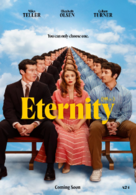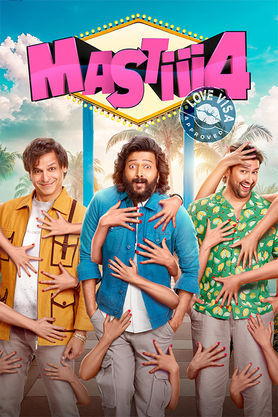Ufff Yeh Siyapaa


A mute man’s life unravels when his wife leaves him due to a misunderstanding. Things worsen when he accidentally becomes mixed up in a drug deal, resulting in dead bodies in his home. Meanwhile, a corrupt cop investigates, aiming to exploit the situation for his own gain.
September 5
2025
Release Date
Hindi
Language
10 minutes
2 hours
Running Time
Cast


Nushrratt Bharuccha


Nora Fatehi


Omkar Kapoor


Sharib Hashmi








Sohum Shah








Sadanand Patil








Charlie Shivhare








Vijay Kumar Dogra








Vipin Katyal








Venkat Maguluri








Guru Shivam
2.5
Average Rating
The above-mentioned average rating is based on the derived ratings of multiple review platforms
OH Review


Review of Ufff Yeh Siyapaa
Plot
Ufff Yeh Siyapaa takes a bold step by attempting to encapsulate a comedic experience in a silent film format—a rarity in modern Indian cinema. The storyline follows the hapless Kesarilal Singh, played by Sohum Shah, as he navigates through what could only be described as a dramatic comedy of errors. The film kicks off with his wife, Pushpa (Nushrratt Bharuccha), growing suspicious of his growing closeness to their glamorous neighbor, Kamini (Nora Fatehi). This suspicion pushes Pushpa to leave him, taking their young son along, leaving Kesarilal in a chaotic and deserted apartment filled with remnants of a disorganized domestic life. Just when Kesarilal thinks his problems can't get any worse, he discovers a corpse hidden behind his sofa, which looks eerily similar to his wife. This shocking revelation sets off a series of desperate and humorous attempts to deal with the body, a journey that includes numerous slapstick moments and misunderstandings. Adding to his woes is a mistakenly delivered drug parcel, owned by criminals who will stop at nothing to get it back, inadvertently pulling Kesarilal deeper into their web of chaos. As the plot unfolds, the film relies heavily on physical comedy and misunderstandings rather than dialogue, creating a landscape of humorous mishaps and frantic chase sequences. The various characters, including a bumbling inspector named Hasmukh (Omkar Kapoor) and a motley crew of gangsters, all converge in Kesarilal's apartment, complicating his already disastrous situation further. Each comedic twist often serves to reference classic slapstick, but instead of evoking nostalgia, it frequently lands flat, contrasting sharply with the well-executed silent films of the past like 'Pushpak' and the more recent 'The Artist'. While the idea of a wordless comedy is intriguing, it ultimately falls short as the plot unravels into a muddled chaos, recycling similar scenes from different perspectives in a bid to maintain engagement. This plot structure, despite its potential for comedic brilliance, often feels repetitive and overstays its welcome. Fortunately, the absurdity keeps the narrative somewhat engaging, allowing the director to explore the boundaries of visual humor, even if the execution is questionable at times.
Acting
In a silent film, performances heavily rely on the actors' physicality and expressions, allowing them to communicate a range of emotions without uttering a single word. In Ufff Yeh Siyapaa, the cast embarks on this challenge with varying degrees of success. Sohum Shah as Kesarilal is presented with a unique opportunity to showcase his versatility. He abandons the intense brooding that marked his performance in Tumbbad and leans into a more comical portrayal filled with exaggerated expressions and physical humor. While he's certainly committed to his role, some moments feel oddly lackadaisical, detracting from the urgent rhythm of the farce unfolding around him. Nushrratt Bharuccha, as Pushpa, shines in her interpretations of vulnerability and strength. Her performance stands out, particularly in moments of marital suspicion where her expressive face and body language convey more than words ever could. However, a sudden and inexplicable makeover in the second half of the film left audiences confused rather than impressed, shedding light on the film's inconsistent character development. Nora Fatehi’s performance offers a fresh perspective; she skillfully embodies the allure of her character, Kamini. Although often pigeonholed into roles that center around dance, here she takes on a more nuanced presence, contributing to the piece's comedic depth. Additionally, Omkar Kapoor's Inspector Hasmukh encapsulates the absurdity of the situation with a humor that resonates; he becomes a quirky addition to the ensemble. Sharib Hashmi’s understated humor provides a nice balance, bringing a touch of grounding to the chaos around him. While the cast generally stepped up to the challenge, there were moments when it seemed that the energy waned, particularly in scenes that dragged out longer than necessary. The actors' ability to carry the weight of an entirely dialogue-free film is commendable, but it does seem that they lacked a guiding directorial hand to harness their full potential. Ultimately, Ufff Yeh Siyapaa demonstrates that while the performances can occasionally captivate, they frequently drift into exaggerated territory, removing the essence of authenticity from their comedic efforts.
Cinematography
The cinematography in Ufff Yeh Siyapaa is notable for its attempt to creatively capture a narrative without dialogue. The use of visual storytelling techniques is crucial in a film that spins its narrative on the absence of spoken words. The cinematographer, while working under the constraints of a limited environment—a cramped apartment building—manages to craft a visually engaging film that utilizes close-ups, exaggerated angles, and vibrant colors. This playful approach aligns well with the tone of the movie and reinforces the comedic elements captured through physicality. However, the set design deserves a mention as well; the apartment serves as a character in its own right, cluttered and chaotic, mirroring Kesarilal's mental state. The decision to fill this space with what seem like props from a horror movie seems inconsistent with the light-hearted nature of the rest of the film. It often distracts from the comedic flow and becomes more of a hindrance than a help, creating a chaotic visual spectacle that overwhelms rather than enhances the comedic storyline. In moments of sheer slapstick humor, the camera captures fast-paced action sequences that often lead to absurd comedic situations. While these are cleverly framed, some of the scenes may feel overly staged, detracting from the spontaneity that would better serve this type of humor. The editing could have streamlined a few sequences to maintain momentum, particularly in scenes that overstayed their welcome like the drawn-out chase sequences that lacked the urgency needed for effective comedic timing. Moreover, A. R. Rahman's score plays an integral role in shaping the film's moods and transitions. His compositions weave through moments of chaos and calm, accentuating the slapstick humor effectively. The music punctuates the silence where dialogues would traditionally be, guiding viewers through tonal shifts. While the cinematography itself possesses potential, it falls short of creating a consistently cohesive visual narrative alongside the score, often getting lost in the scattershot approach to visual storytelling.
Direction
The film is a product of director G. Ashok’s vision, where he aims to explore the classic themes of comedy through a modern lens by choosing to eliminate verbal dialogues altogether. This daring choice, while admirable, proves to be a double-edged sword. The intent to create a fresh, wordless comedy resonates well in principle but struggles in execution. The film oscillates between moments of clever comedic setups and stretches that feel labored, causing pacing issues that undermine the overall enjoyment of the film. Although Ashok attempts to mix theatricality with cinematic techniques, the inconsistency in the rhythm of the screenplay becomes an evident flaw. The reliance on physical comedy, while often successful, occasionally turns into over-the-top antics, pushing the boundaries of believability. This could lead to moments of joyous laughter but also stretches into the realm of tedium, especially when the same sequences are repeated without sufficient variation in the unfolding narrative. The direction falters in pacing, particularly with the dream sequences and some prolonged sequences that don't quite land, making it feel as though they were indulgences on Ashok’s part rather than necessary storytelling tools. It raises the question of whether the film would have fared better with a tighter narrative focus and tighter editing, ultimately producing a more cohesive viewing experience. Nevertheless, it must be acknowledged that Ufff Yeh Siyapaa thrives on its audacity to venture into silent storytelling, reviving interest in a genre that has seen very little exploration in recent years. The effort to weave chaos into comedy through a dialogue-free format is ambitious, even if the results are uneven. Ashok’s experience as a filmmaker shines in the moments where comedic timing gels perfectly, leaving audiences momentarily delighted. Despite falling short on several fronts, the film reflects a playful ambition and an earnest effort to innovate within the constraints of the chosen genre.
Conclusion
Ufff Yeh Siyapaa stands as a curious venture within contemporary Indian cinema, attempting to unravel a humorous narrative without the reliance on dialogue, an approach not commonly explored within the industry's formulaic approach to storytelling. While it presents an ambitious premise with its silent format and chaotic premise, various elements of the execution detract from the overall impact of the film. The plot, which centers around misunderstandings and chaotic mishaps, often teeters on the edge of absurdity, capturing a comedic atmosphere but frequently missing the mark on delivering effective punchlines. Acting performances, although vibrant, sometimes feel exaggerated, lacking the subtlety that would have significantly contributed to the film's pacing and comedic timing. This reliance on over-the-top antics distracts from the underlying humor and pull viewers away from a potentially immersive comedy. The cinematographic choices, while commendable and crafted with creativity, grapple with pacing and coherence, resulting in a final product that appears haphazardly assembled rather than thoughtfully curated. Despite these issues, the film does offer a refreshing palette cleanser in an industry that often feels overstuffed with predictable narratives. It successfully evokes a nostalgic charm for those familiar with physical comedy while daring to redefine it in a digital age. Although it falters in execution, there lies a flicker of potential that, if refined, could springboard to greater artistic heights. Ufff Yeh Siyapaa may not break grounds, but it captures an audacious spirit worthy of recognition, inviting viewers to celebrate the messiness of life’s unexpected twists—whether through dialogue or silence, laughter remains a universal language.
Share this review
The Great Reviews
Times of India
Rediff
More like this
Zootopia 2
In Zootopia 2, brave rabbit cop Judy Hopps and clever fox Nick Wilde reunite to solve their toughest case yet. As they navigate twists and turns in a mysteri...


